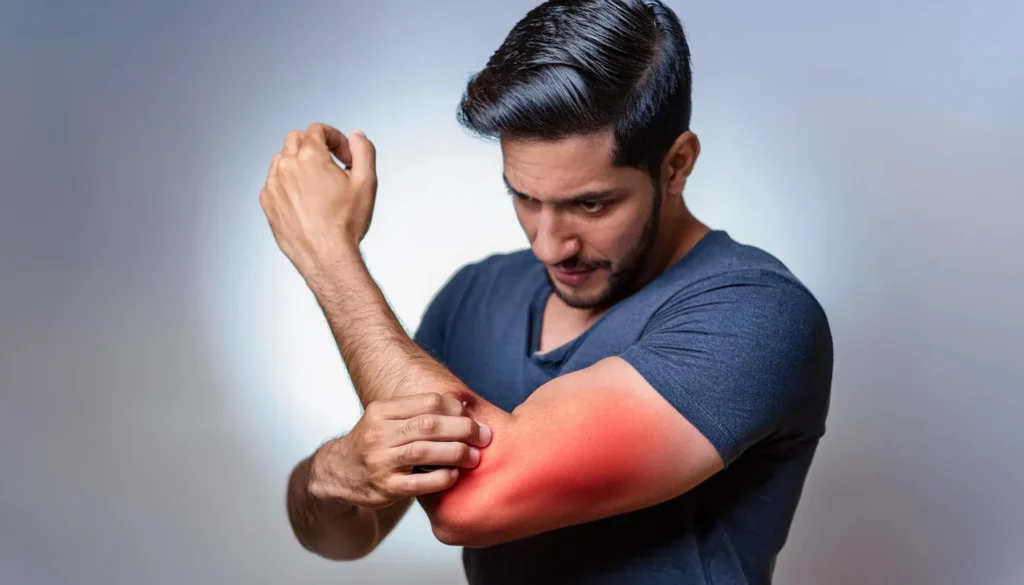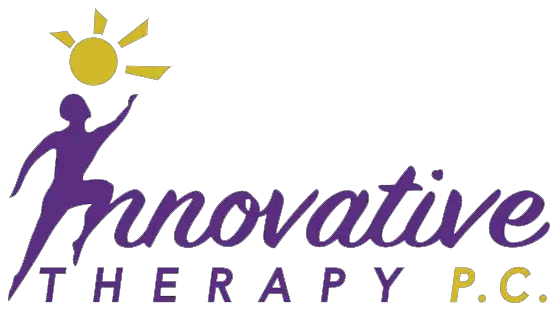Elbow Pain Relief - Fast & Effective Treatment in Dallas, TX

Innovative Therapy P.C. offers specialized non-surgical elbow pain treatments to help you regain mobility. Whether you suffer from tennis elbow, golfer’s elbow, or arthritis, our Dallas-based elbow specialists provide cutting-edge therapy and rehabilitation to ensure long-term relief.
- Top-rated elbow pain specialists near you in Dallas
- Personalized non-surgical therapy & rehabilitation
- Minimally invasive pain relief solutions
- Same-day appointments are available for urgent cases
- Proven treatments for sports injuries & chronic elbow pain
Let us help you get back to pain-free movement. Schedule your elbow pain treatment near you in Dallas now!
Advanced Non-Surgical Elbow Pain Treatments Available in Dallas
Personalized Physical Therapy Programs for Elbow Rehabilitation
At Innovative Therapy P.C. in Dallas, we provide customized physical therapy programs designed to restore elbow function, improve mobility, and reduce chronic pain. Whether your pain is caused by tennis elbow, golfer’s elbow, or a repetitive strain injury, our expert therapists tailor a targeted rehabilitation plan to address your condition.
Our physical therapy approach includes:
- Strengthening exercises to support the elbow joint and surrounding muscles.
- Manual therapy techniques to improve mobility and reduce stiffness.
- Range-of-motion therapy to enhance flexibility and prevent stiffness.
- Progressive rehabilitation plans are designed for athletes, workers, and post-injury recovery.
We focus on long-term recovery strategies, ensuring that you regain full functionality and prevent future injuries.
Modern Pain Management Techniques for Elbow Conditions
Innovative Therapy P.C. uses the latest non-surgical pain management techniques to provide effective and lasting relief for elbow pain. These advanced treatments reduce inflammation, improve circulation, and promote natural healing without invasive procedures.
Some of our cutting-edge pain management techniques include:
- Ultrasound-Guided Corticosteroid Injections – Targets inflammation in the elbow joint, tendons, and ligaments to reduce pain.
- Platelet-Rich Plasma (PRP) Therapy – Uses your platelets to regenerate damaged tissues and speed healing.
- Microcurrent Point Stimulation (MPS) Therapy – A revolutionary treatment that targets trigger points and nerve pathways to relieve pain.
- Shockwave Therapy – Stimulates blood flow and tissue repair to treat chronic elbow pain.
These therapies help patients avoid surgery, offering a safe and effective alternative for those seeking lasting elbow pain relief in Dallas.
The Connection Between Elbow Pain and Nerve Compression in Dallas, TX

Joint issues don’t always cause elbow pain—it can also result from nerve compression. Conditions like cubital and radial tunnel syndrome occur when nerves in the elbow are compressed, irritated, or inflamed, leading to pain, numbness, and tingling in the arm and hand. Patients with ulnar nerve entrapment often experience weakness in the grip and a burning sensation along the Forearm.
At Innovative Therapy P.C., we specialize in non-surgical nerve pain relief techniques, including nerve gliding exercises, ultrasound therapy, and ergonomic modifications to reduce pressure on the affected nerves. We aim to restore function, improve mobility, and prevent further nerve damage.
Client Success Stories from Dallas
Minimally Invasive Surgical Options for Severe Elbow Problems
For patients with severe elbow injuries or degenerative conditions, our specialists provide minimally invasive arthroscopic procedures to treat joint damage and chronic pain.
Benefits of Arthroscopic Elbow Surgery:
- Small incisions lead to faster healing and minimal scarring.
- Less post-operative pain compared to traditional open surgery.
- Quicker recovery times, allowing patients to return to daily activities sooner.
- Precise surgical techniques improve joint function and movement.
Our elbow surgeons in Dallas specialize in arthroscopic procedures for tennis elbow, ligament tears, and joint instability, helping patients efficiently regain strength and flexibility.
Benefits of Partial Elbow Replacement for Targeted Pain Relief in Dallas, TX
For patients with severe joint deterioration or trauma, a partial elbow replacement may be the best solution. Unlike a total elbow replacement, this minimally invasive procedure preserves healthy joint tissue, allowing for a more natural range of motion.
Advantages of Partial Elbow Replacement:
- Preserves natural joint movement and surrounding healthy tissue.
- Less recovery time compared to full elbow replacement.
- Reduces pain and restores function for improved quality of life.
- It is ideal for patients with localized joint damage but overall joint stability.
Our specialists in Dallas assess each patient’s condition individually, recommending the most effective and least invasive solution for long-term elbow pain relief.
How Repetitive Strain Injuries Contribute to Chronic Elbow Pain in Dallas, TX
Repetitive strain injuries (RSIs) are a leading cause of chronic elbow pain in individuals who perform repetitive arm movements at work or during sports activities. RSIs occur when tendons, muscles, and ligaments are overused without proper recovery, leading to tendon inflammation, microtears, and stiffness. Common repetitive motion injuries affecting the elbow include:
- Tennis Elbow (Lateral Epicondylitis) – Caused by overuse of the forearm tendons, leading to outer elbow pain.
- Golfer’s Elbow (Medial Epicondylitis) – This affects the inner elbow and is often seen in weightlifters, golfers, and manual laborers.
- Olecranon Bursitis – Inflammation of the bursa sac at the back of the elbow due to repeated pressure.
Our Dallas-based elbow specialists provide custom rehabilitation plans, including manual therapy, stretching techniques, and strengthening exercises to help patients recover from repetitive stress injuries and prevent future pain.
Why Choose Innovative Therapy P.C. for Your Elbow Pain Treatment in Dallas
At Innovative Therapy P.C., we combine extensive experience with a patient-centered approach to provide effective elbow pain solutions. Our multidisciplinary team collaborates to develop comprehensive treatment plans tailored to your unique needs, ensuring the highest quality of care.
Key benefits of choosing us include:
- Expertise in treating a wide range of elbow conditions
- Utilization of advanced, non-surgical treatment methods
- Personalized rehabilitation programs
- Comprehensive post-operative care
- Focus on preventative measures to maintain long-term elbow health
- Commitment to patient education and empowerment
- Convenient Dallas location with state-of-the-art facilities
At-Home Remedies and Self-Care Strategies for Managing Elbow Pain
While professional treatment is essential for long-term relief, patients can use several self-care techniques to manage mild to moderate elbow pain at home. Our elbow pain experts recommend the following strategies:
- RICE Method – Rest, Ice, Compression, and Elevation help reduce swelling and inflammation.
- Gentle Stretching – Improves range of motion and prevents stiffness.
- Wrist and Forearm Strengthening – Builds muscle support around the elbow.
- Ergonomic Modifications – Adjusting workstations to reduce strain on the elbow joint.
- Over-the-Counter Pain Relief – Nonsteroidal anti-inflammatory drugs (NSAIDs) like ibuprofen can help manage acute pain.
For persistent or worsening elbow pain, we recommend seeking professional care at Innovative Therapy P.C. for specialized, non-surgical treatments tailored to your condition.
Preventative Measures and Lifestyle Changes for Long-Term Elbow Health
Ergonomic Assessments and Modifications for Daily Activities
Many cases of chronic elbow pain stem from poor ergonomics at work and home. At Innovative Therapy P.C., we provide ergonomic assessments and training to help patients reduce stress on their elbow joints and muscles.
Our ergonomic recommendations include:
- Proper workstation setup to prevent overuse injuries.
- Correct lifting techniques to avoid unnecessary strain.
- Supportive braces and splints for joint stabilization.
- Adjustments for daily activities such as writing, typing, and sports movements.
Making small lifestyle adjustments can significantly reduce elbow pain and prevent future injuries.
Importance of Regular Exercise and Weight Management
Physical activity and a healthy lifestyle are crucial in maintaining elbow joint health. Excess weight stresses joints, increasing the risk of arthritis and tendon inflammation.
Key benefits of regular exercise for elbow health:
- Improves joint mobility and flexibility.
- Strengthens surrounding muscles to support the elbow.
- Reduces the risk of repetitive strain injuries.
- Helps manage inflammation in chronic conditions like arthritis.
Our Dallas-based physical therapy programs include customized exercise plans to help patients stay active, prevent injuries, and support long-term elbow health.
Best Elbow Pain Treatment Near Me in Dallas, TX
Suppose you’re searching for expert elbow pain treatment near me in Dallas, TX. In that case, Innovative Therapy P.C. offers personalized, non-surgical solutions for tennis elbow, golfer’s elbow, and chronic joint pain. Our experienced specialists provide physical therapy, advanced pain management, and minimally invasive treatments to help you move pain-free.
Get Relief from Elbow Pain Near You
FAQs About Elbow Pain Treatment Near Me in Dallas, TX
What is the best treatment for elbow pain?
The best treatment depends on the cause. Options include physical therapy, manual therapy, ultrasound therapy, and pain management techniques like PRP injections or corticosteroids.
When should I see a specialist for elbow pain?
Suppose you have persistent pain, swelling, limited movement, or difficulty gripping objects. In that case, seeing an elbow pain specialist near you is time.
Can I treat tennis elbow or golfer’s elbow at home?
Mild cases can be managed with rest, ice therapy, stretching exercises, and over-the-counter pain relievers. For severe pain, professional treatment is recommended.
How long does it take to recover from elbow pain?
Recovery time depends on the severity of the condition. Mild cases may improve in a few weeks, while chronic conditions can take months with proper therapy. Overall, the right type of elbow pain relief will depend on the specific diagnosis. An expert team can assist in determining the best approach to treat elbow pain, whether it be addressing a shoulder injury or enhancing the muscles and tendons around the joint.
Does Innovative Therapy P.C. accept insurance for elbow pain treatment?
Yes, we accept most major insurance plans. Contact our office to verify coverage and schedule an appointment for affordable elbow pain treatment in Dallas. The elbow is a complex joint that allows movement, connecting the humerus and ulna. If pain on the side of the elbow persists, consult an orthopedic elbow specialist to diagnose and treat the issue effectively. They may recommend exercises to stretch and strengthen the muscles of the Forearm.
How do I get instant relief from elbow pain?
Experiencing elbow pain can be debilitating, especially when caused by repetitive strain on the lateral epicondyle. This common cause often affects the outside of the elbow and may lead to shoulder pain. If your elbow is a complex joint with severe pain, seeing a doctor for a proper diagnosis is essential.
An orthopedic doctor can evaluate your elbow anatomy and recommend treatment options, including pain medications or home treatment for elbow pain. Imaging tests may be necessary to identify any underlying issues. If elbow pain doesn’t improve, consult an orthopedic surgeon to develop a personalized treatment plan to help relieve your pain and get you back to normal activities.
What is the best painkiller for elbow joint pain?
It’s essential to consider the underlying injuries and conditions to diagnose the best painkiller for elbow joint pain. Common elbow injuries include tendonitis and bursitis, which can cause severe pain inside the elbow. An elbow doctor may suggest treatment methods such as medication or a cubital tunnel release if necessary.
Sometimes, the elbow may develop a bump on the outer side, indicating inflammation. It’s crucial to seek help from a doctor as soon as possible to avoid worsening the condition. Treatment methods could be provided without surgery, focusing instead on managing pain and improving function.
Which doctor is best for elbow pain?
When experiencing severe elbow pain, visiting an orthopedic doctor is essential. They can identify the cause of the pain, whether it’s damaged tendons that attach to the elbow’s bony structure or insufficient synovial fluid in this type of joint.
To manage discomfort, they may recommend nonsteroidal anti-inflammatory drugs and advise on exercises to help bend your arm without exacerbating symptoms. If the pain is worse with certain activities, seeking care right away might prevent complications that require surgical intervention.
In a one-on-one consultation, your doctor can develop a tailored treatment plan to alleviate pain and restore functionality.
